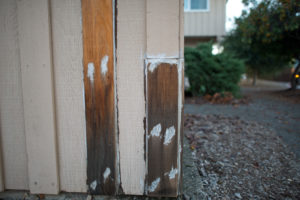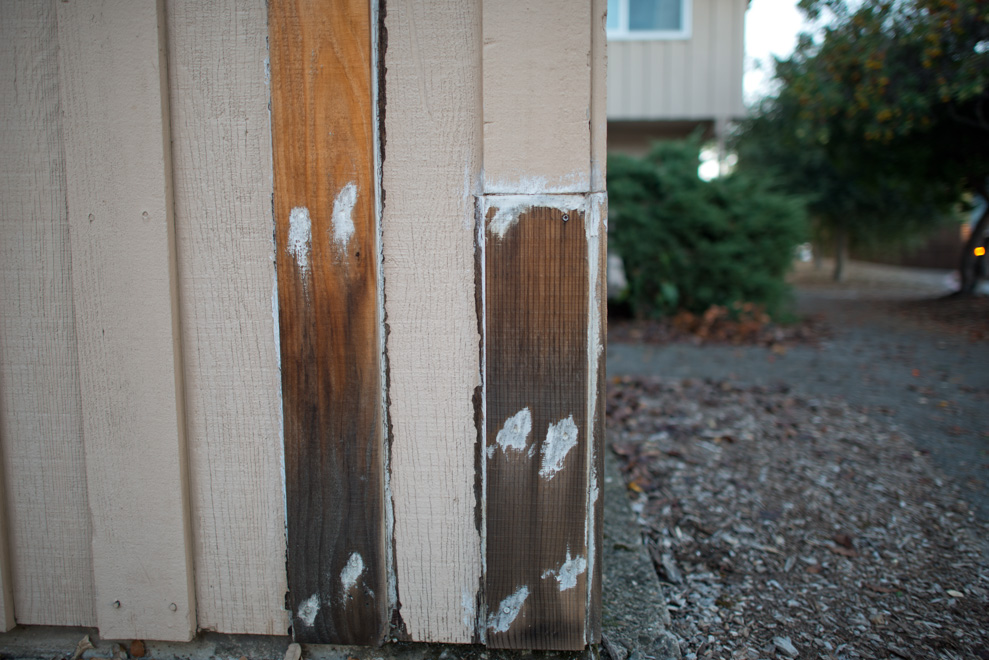Due to concerns over new graduate housing development planned in Escondido Village (EV), some graduate students have filed an appeal to the Santa Clara County Architecture & Site Approval Committee in an attempt to block construction. The county board is currently reviewing the appeal, and a hearing for the appeal will be held on Nov. 17. In the meantime, the EV project will be delayed.

The appeal voiced three major concerns: the implementation of proper health measures to address possible lead hazards, the need for family housing and a perceived need for better communication between the University and graduate students.
“We filed an appeal with the county not in order to oppose the project, but in order to ensure that the project moved forward while addressing concerns that many students felt were still unresolved,” said Zachariah Rodgers Ph.D.’17, one of the writers of the appeal.
Jocelyn Breeland, executive communications officer of Stanford’s Residential and Dining Enterprises (R&DE), stated that the University has had open conversations with the graduate community.
“Over the last year, we have had numerous meetings with students including the Graduate Student Council, Graduate Housing Advisory Committee, Community Associates, Graduate Student Family Representatives, large town hall and smaller community meetings, in addition to individual conversations,” she explained in an emailed statement.
Potential lead paint hazard
Some graduate students are concerned about worker and student health in light of continued lead exposure. An incident in 2013 has spurred concern about whether construction work at Escondido Village would expose workers to lead paint.
According to the Centers for Disease Control and Prevention (CDC), lead based paints were banned from use in housing by 1978.
“It would be expected for the [Escondido Village] buildings to have lead or asbestos in the paint,” said Cenobio Hernandez ’17, a member of Student and Labor Alliance (SALA).
Following up on the 2013 incident, The Daily conducted tests this month which suggest there may be lead in some exterior paint coats. The Daily used an EPA-approved test swab that changes color in the presence of lead. According to the test, lead might be found where the top coat of paint has been damaged, or on the wooden trusses found in the rear of some units.
During the summer painting project in 2013, a graduate student, who asked to remain anonymous, alleged that workers of renovation company Monroe Painting did not wear any protective gear while scraping off lead-based paint.
According to the Environmental Protection Agency, there is no lead-certified renovation firm under the name of Monroe Painting.
Concerned, the anonymous student conducted a soil sample and found indications of hazardous lead level. Subsequently, the student sent a letter to the Occupational Safety and Health Administration (OSHA) detailing that “paint chips are on the ground and not disposed of properly.”
OSHA responded to the student, explaining that the situation was being handled.
“Monroe Painting has advised the Division [of OSHA] that the hazards you complained about have been investigated and corrected. The employer states that the job has stopped and not active. Clean-up is proceeding,” OSHA wrote.
Although the University assumes that there is lead in Escondido Village based on the age of the buildings, Stanford argued that there was no threat to the health of EV residents during the summer 2013 painting project.
“Testing of [paint chip] samples from each of the affected buildings found no lead in the soil and no hazard from the paint chips,” wrote Lisa Lapin, associate vice president of university communications, in a recent email to The Daily.
Some students remain concerned over the possibility of lead exposure. According to the anonymous graduate student, who has 20 years of experience in construction and construction management, hazardous materials may still pose a threat.
“I would feel incredibly unsafe if the administration went ahead with this project because I haven’t seen a plan whatsoever for how [the university will] address the lead hazards,” the student said.
Hernandez suggested some ways the university can handle health and lead concerns.
“The university [should] research and hire a company that pays their workers fair wages and also provides on site safety and training to make sure residents and workers aren’t exposed to lead,” Hernandez said.
Health protocols
The university assures that there are plans in place to address possible health concerns within the graduate community.
“Stanford’s Environmental Health & Safety (EH&S) will be involved in the demolition of the buildings and the management of asbestos and lead-based paint abatement, if applicable,” wrote Jean McCown, associate vice president of the Office of Government and Community Relations, in an email to The Daily.
In another email, Associate Vice President of Land Use and Environmental Planning Catherine Palter said that buildings with lead-based paints (proven or assumed) require special work practices.
According to Laura Goldstein, the executive director of the department of project management, appropriate parties will be held accountable if there is malpractice on site or if a health concern arises.
“The general contractor is liable for safety on site during construction and is responsible for any damages,” Goldstein said.
Stanford, however, does not supervise employee safety. Stanford does not conduct safety inspections because supervising employees directly opens the university to considerable liability. Instead, the general contractor will conduct safety inspections.
Those handling hazardous materials are nonetheless subject to particular scrutiny. Hazardous materials abatement subcontractors are subject to Stanford approval, and the university inspects hazardous material remediation work before, during and after work is done. Stanford is also in the process of inspecting the site of the demolition for asbestos, lead and other potential hazards.
Concern over courtyards
In addition to the health worries, graduate students behind the appeal are also concerned that the remodeled EV won’t offer the same benefits to the students that live there, particularly with regard to family housing.
“The biggest concern is that [Stanford] is not taking into account the importance of what’s going to be demolished — the graduate student family courtyards,” Rodgers said.
Rodgers has been living in Escondido Village for four years. His children, aged three and ten, often play in the family courtyards: large, enclosed green spaces within Escondido Village where families can relax and socialize.
“Courtyards bring us together, and we’re able to get to know each other,” Rodgers said.
In addition, some graduate students voiced concerns that both family housing units and single student housing are being demolished to make way for the new construction, as opposed to only demolishing single graduate housing units.
“The remaining family units after the new housing is built will be sufficient to accommodate the future eligible families,” wrote Catherine Palter, associate vice president of land use and environmental planning, in an email to the Daily.
Lisa Lapin, associate vice president of university communications, agreed.
“All 272 of our graduate families will continue to have courtyard-style housing, and that courtyard-style housing will be available for future families as well,” Lapin wrote in an email.
Rodgers does not believe that these new courtyard-style housing will be the same.
“[Stanford] didn’t really incorporate any student input as to how to actually make spaces into a courtyard,” Rodgers said. “They just chopped down a bunch of trees that didn’t need to be chopped down.”
The University, however, believes that these new courtyards will be sufficient.
“While it is true some family courtyard housing will be demolished for the new project, we still have adequate family courtyard housing for all families who meet the requirements,” Breeland stated in an email.
The need for new housing
According to plans put forth by Stanford’s Residential and Dining Enterprises (R&DE), 400 housing units will be demolished in EV while 2,400 housing units will be created, a total net of 2,000 new living spaces. This will allow Stanford to house 75 percent of its graduate student population, up from 55 percent.
“We desperately need new graduate housing,” said Ken Hsu, assistant vice provost for student affairs.
Graduates students can agree.
“We all feel like this project is important and exciting to bring in more students to alleviate a critical need for more housing,” Rodgers said.
Despite this shared objective, consensus remains elusive.
“I believe that the process of the project has consisted of a series of one-way meetings,” Rodgers said. “Stanford claims to listen to feedback, and then appears to march forward with [a] pre-existing agenda.”
Contact Aparna Verma at averma2 ‘at’ stanford.edu.
